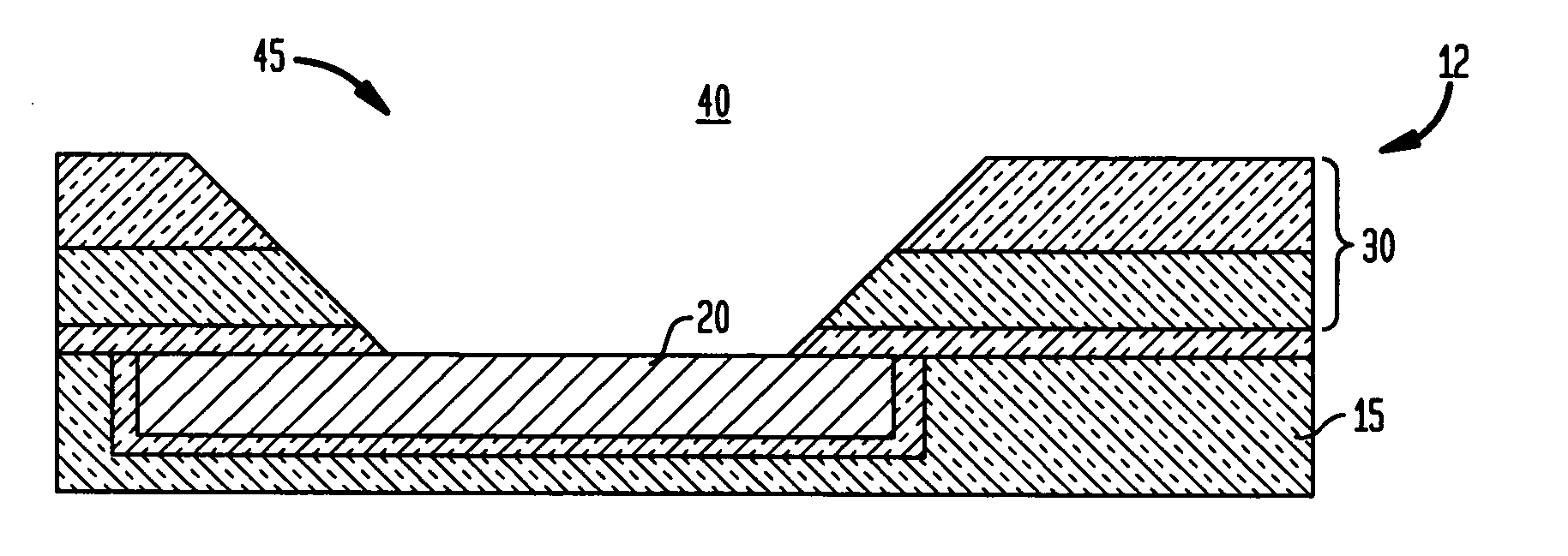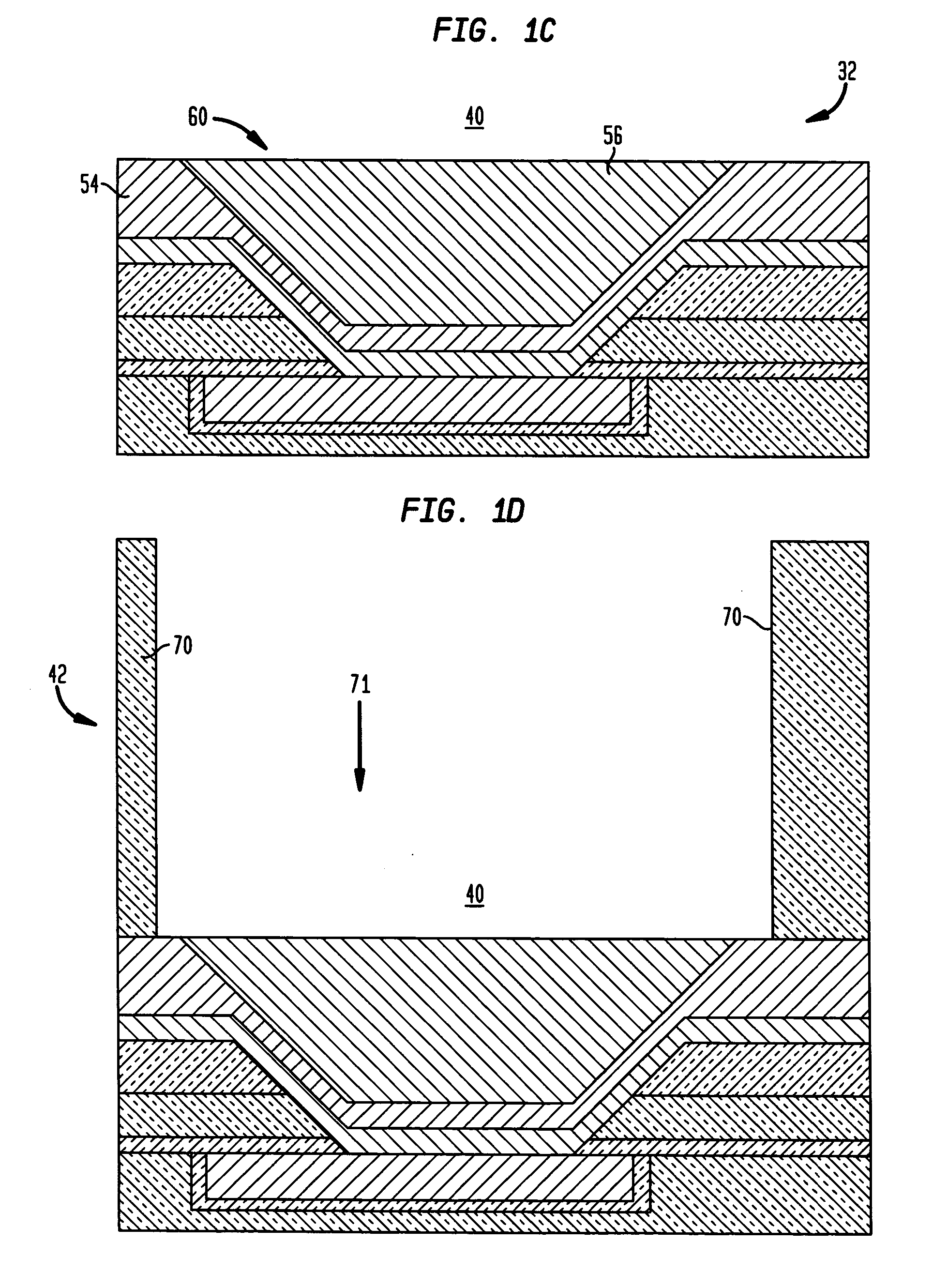Damascene patterning of barrier layer metal for C4 solder bumps
a barrier layer and metal technology, applied in the direction of soldering apparatus, semiconductor/solid-state device details, manufacturing tools, etc., can solve the problems of degrading the mechanical reliability of the c4, and achieve the effects of reducing the amount of undercut, improving mechanical stability of the formed solder bump connection, and reducing the pitch
- Summary
- Abstract
- Description
- Claims
- Application Information
AI Technical Summary
Benefits of technology
Problems solved by technology
Method used
Image
Examples
Embodiment Construction
[0022] The process flow for forming a novel solder bump metallurgy according to the invention is now described with reference to FIGS. 1(a)-1(g). As shown in FIG. 1(a), a first process step 12 is depicted that includes the step of forming a passivation layer 30 upon the chip surface that includes a last conducting metal layer 20, e.g., a metallic bonding pad layer comprising Cu, Al, or other conducting metal layer, in a low-k interconnect dielectric material layer 15 such as an oxide such as FSG (i.e., fluoro-silicate glass or like fluorinated silicon oxide,) an organic dielectric, such as SiLK, or a hybrid dielectric, such as SiCOH. The passivation layer 30 is deposited using conventional deposition techniques, such as plasma-enhanced chemical vapor deposition (PECVD) and may comprise one or more passivation material layers, such as SiO2 and SiN. In one embodiment depicted in FIG. 1(a), the passivation layer 30 comprises a stack of deposited passivation material layers including a ...
PUM
| Property | Measurement | Unit |
|---|---|---|
| thickness | aaaaa | aaaaa |
| thickness | aaaaa | aaaaa |
| thickness | aaaaa | aaaaa |
Abstract
Description
Claims
Application Information
 Login to View More
Login to View More - R&D
- Intellectual Property
- Life Sciences
- Materials
- Tech Scout
- Unparalleled Data Quality
- Higher Quality Content
- 60% Fewer Hallucinations
Browse by: Latest US Patents, China's latest patents, Technical Efficacy Thesaurus, Application Domain, Technology Topic, Popular Technical Reports.
© 2025 PatSnap. All rights reserved.Legal|Privacy policy|Modern Slavery Act Transparency Statement|Sitemap|About US| Contact US: help@patsnap.com



